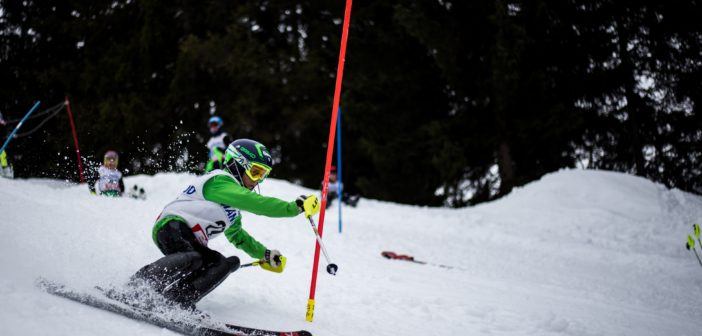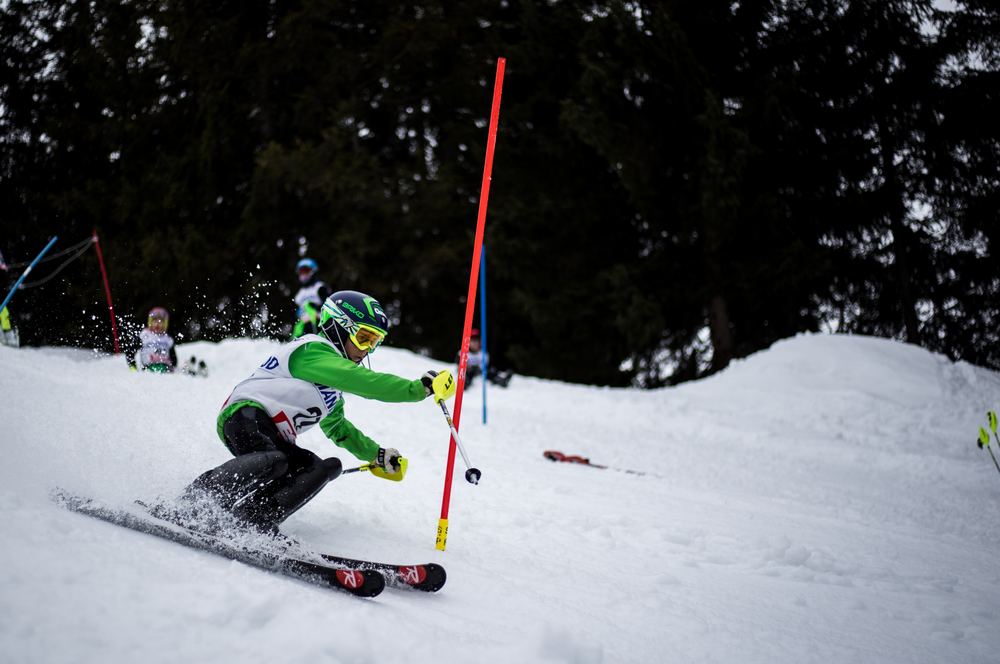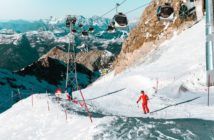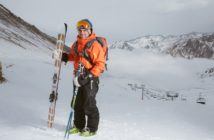Slalom Skiing is a sport for those that love speed and enjoy giving their thighs a serious workout. It is a form of skiing full of tight turns, exhilarating maneuvers, and immense control.
Slalom Skiing is one of the original Alpine skiing variations, and has become immensely popular as a professional sport and as a hobby.
Giant slalom skiing is a close variant of slalom skiing, and equally popular among those of us who are sporty. It takes a lot of skill, and no small amount of determination, to become proficient.
You can just strap on your gear and jump right into a Slalom ski course! Well, you could, but you would probably end up falling down and hurting yourself.
Plus, there is some gear that is unique and necessary to slalom skiing that you will need to pop into your kit.
Check out our full guide on how to slalom ski, with a few tips and tricks for Slalom ski tricks, as well as a run-down of all the gear you need to hit the slopes safely.
First up… just what is slalom skiing?
Contents
Slalom Skiing
As a sport, it has changed very little from when it was first introduced almost 200 years ago.
Basically, Slalom skiing is a variation of Alpine skiing, wherein the skiers must pass through a series of ‘gates’ while going down an incline. These gates are placed so that skiers must make sharp turns with precise timing and weight distribution.
Slalom skiing also has gates placed closely together, requiring skiers to almost zig-zag over the course in order to complete it.
There are even times when the gates are placed within a meter of each other, requiring pinpoint accuracy to get through without penalty; these are called flushes, and are littered all over slalom race courses!
Flushes are the real challenge of professional slalom skiing. As both feet/skis must pass in between the poles that make the gate, the sheer amount of precision needed is intimidating – but what a rush!
Giant Slalom Skiing
Giant slalom skiing is pretty similar to the typical variety. Despite what the name might imply, this form is actually the easier version, and the one most hobbyists are familiar with.
For giant slalom skiing, the gates are placed further apart and the slope itself is usually longer. There are fewer gates too. This means that less accuracy is needed on the part of the skiers, and the experience itself is easier for newcomers to master.
If you are new to slalom skiing, then giant slalom skiing should be your introduction to the sport! It is a safer, easier version that doesn’t take as much rigid skill.
Safety Gear and Equipment for Slalom Skiing
As any skiing instructor worth their salt will tell you, you can’t jump into skiing unprepared; it leads to disaster, of which may leave you injured with weeks of recovery needed.
It is vitally important to properly equip yourself before even going near the top of a snowy slope.
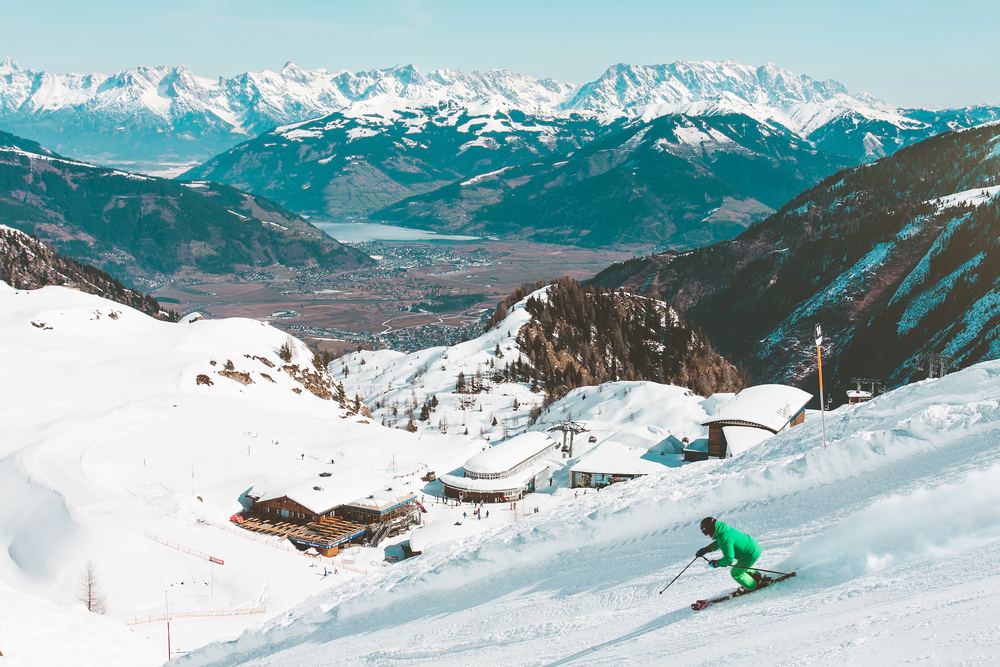
Slalom Skis
Slalom skis are unique amongst their siblings. Cut for the sharp turns and quick maneuvers, these skis are short and crafted in an hourglass shape, which is not ideal for the inexperienced.
Shorter skis are also ideal for slalom, as the shorter they are, the less chance there will be of their tips catching on the gates as you pass through.
Giant Slalom Skis
Requiring less turning ability than slalom skis, giant slalom skis are longer and less curvy, making it easier to shoot down the slope and still make the turns typical of the sport.
Safety Gear
Aside from the general safety gear you need for skiing, which we will go over below, slalom skiing requires shin-guards, pole-guards, and chin-guards.The poles that make up the gates of slalom skiing are notorious for flipping up and whacking people in the face.
Although this usually only happens when the skier hits the pole – something that professional slalom skiers do in order to shave valuable seconds off of their total track time – a vengeful pole to the face is never a pleasant experience.
Shin-guards can be strapped on under your suit (if you are wearing a professional racing suit and need to cut down on wind resistance) or strapped over your pants.
Outside of a race, it doesn’t matter where the shin-guards are, so long as they are firmly protecting your shins. (Remember how painful it is banging your shin into the coffee table? Double that for a slalom gate pole!)
As for face protectors, aside from the helmet and goggles, you will need to clip a chin-guard to your helmet. They are somewhat like the chin-guards on football helmets in appearance, only not covering quite so much of the face.
What chin-guards do is prevent the pole from whacking you in the face. Standard headgear for skiing does not protect your chin, lips, or nose. The chin-guard steps into this empty role and prevents all sorts of ugly bruises, split lips, or loose teeth from forming.
Pole-guards do much the same as the above, only they keep your hands from getting a hard rap on the knuckles (ouch!) from a gate. These can be bought separately from poles, and are clipped on over the grip.
Clothing
Feel free to skip this section if you are already familiar with the basic clothing needed for a fun, safe, and comfortable ski trip!
When it comes to putting together an outfit for slalom skiing, you need to hit up all three key layers: the underlayer, the insulation layer, and the shell layer. Combining these three will keep you warm even while plummeting down a steep slope!
The underlayer is pretty simple: thermal underwear and ski socks. Look for moisture-wicking materials and avoid cotton, as that will just soak up your sweat and stay damp.
Ladies, invest in a good sports bra that will stay comfortable throughout the day, as you will be working up a lot of sweat!
The insulation layer traps heat under your clothes, keeping you warm and preventing nasty things like frost burn and frostbite from developing. Aim for fleece or wool blends, although any sort of ski clothing designed to withstand cold weather will be suitable – so long as it retains heat.
The shell layer is arguably the most important one. This keeps the snow and ice out and creates a barrier between your insulation layer and the wind.
Water-proof and wind-proof, this layer is your first line of defence against the cold. You will need a shell jacket and shell pants. Some companies actually make clothing that acts as an insulation and shell in one layer!
General Skiing Safety Gear
All of these layers and gear may make it seem like you are heading off into battle, not going skiing – but it is important, and very much worth it, to outfit yourself properly.
There are four main things you need to add to your outfit: gloves, goggles, a helmet, and boots.
Depending on how sensitive you are to the cold, you will have a choice between mittens or ski gloves.
Mittens are plusher and hold warmth better than ski gloves. All of that stuffing reduces your hand mobility, though, unlike ski gloves – which will keep you from freezing and do not hamper your range of motion quite so much.
Goggles will be more important than you think! Aside from protecting your eyes from those pesky gate poles, goggles prevent sun glare from blinding you, flecks of ice getting in your eyes, and protects your delicate eyeballs from wind pressure.
Never go skiing without a helmet. It is just too dangerous to skip this piece of gear, especially with a sport like slalom skiing.
Do you want to take the full brunt of a gate pole to the noggin’? Of course not! That is a one way trip to the emergency room, with stitches and a shiny bruise as your trophy. Buy or rent or borrow, whatever! Just get yourself a ski helmet!
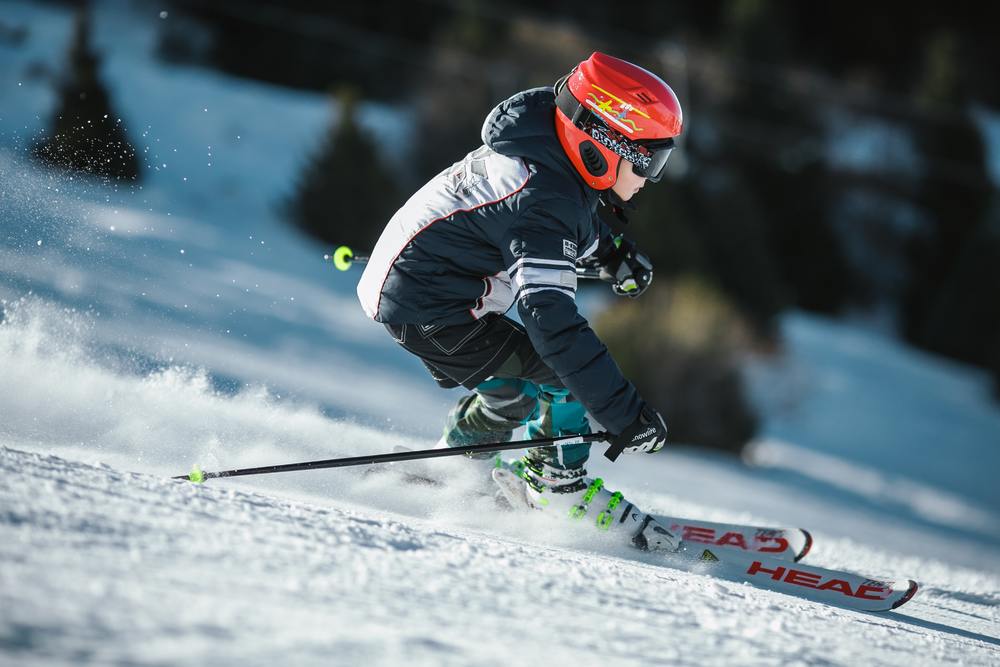
Finally, a proper pair of ski boots is essential. Given the amount of pressure that will be put on your ankles for slalom skiing, it is vital to get a good pair of alpine ski boots!
Alpine boots come with extra insulation and are designed to support your ankle, preventing breaks during falls and helping you stay upright through all those sharp turns!
Slalom Skiing: Tricks and Tips
Get this idea through your head right now: slalom skiing is a hugely fun skill, but one that is difficult to master and stands as a very advanced technique.
It’s intense. It’s hard. It will push you to your limits. But it’s worth it.
Tip One
Don’t focus on making sharp turns. Keep them as wide and as round as you can, smoothly curving towards the gates.
You aren’t racing anyone. Just have some fun!
Tip Two
Work those calves and thighs. Dig your skis into the snow and carve some smooth lines. In slalom skiing, it is important to start carving into your groove early.
Getting the angle right early on allows you to glide through the gate and then swerve towards the next one smoothly.
Tip Three
Look at the track and plot your journey. Even in professional races, skiers look at the track and plot their course!
While you aren’t restricted to one trip down the slope, it will really help you to have an image in your head of your intended way through the course.
Pick out a few spots to start carving early, or where you can start late, and most of all, plot a course that lets you maintain speed.
Here’s a quick video showing what slalom skiing looks like.
So, are you ready to ski slalom style? It is a hard sport to master, but, boy, is it an exhilarating one.
If you are ready to give slalom skiing a try, then pack your bags and get ready to hit the slopes!
Do you have any tips on slalom skiing?

